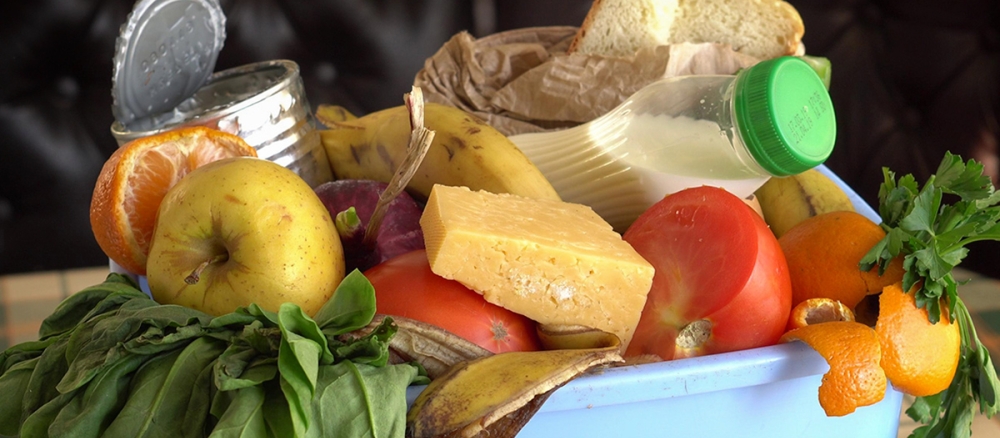No one buys food with the intention of throwing it away. But according to the U.S. Environmental Protection Agency (EPA), more than 34 million tons of food was thrown away in 2010 in this country. In fact, food is the single largest component of waste going to landfills and incinerators.
Here in Minnesota, the average household in St. Paul wastes almost $100 worth of food every month. This is bad for our wallets — and for the environment.
Wasted food means wasted resources
The growing, processing and transportation of food uses significant amounts of chemicals, energy, water, land and money ($165 billion/year) — all lost if the food is not consumed.
There is an impact after the wasted food goes to a landfill, too. Food in a landfill is initially decomposed by aerobic bacteria, as it would be in a backyard compost pile, but after the oxygen has been depleted, the remaining waste is broken down by methane-producing anaerobic bacteria. Methane is a greenhouse gas more potent than carbon dioxide. According to the EPA, significant methane production typically begins one or two years after waste disposal in a landfill and continues for 10 to 60 years.
What you can do to reduce food waste
- Plan your meals in advance and buy only what you need.
- Accept imperfection. Don't be afraid of brown spots or mushy parts that can easily be cut away.
- Store it smarter. Most vegetables keep longer in a humid environment, such as in a plastic bag or crisp drawer in the refrigerator. Learn more: 10 creative ways to help keep food fresh
- Use up your leftovers. The Love Food Hate Waste website provides recipes that use small amounts of common ingredients. When searching for leftover recipes, look for ones that are flexible and allow you to use whatever vegetable is in the refrigerator.
- Freeze it. If you can't use up those veggies or leftovers right away, freeze them and use them later. Remember to label container with contents and date.
- Be prepared at restaurants. Portions at restaurants are sometimes too big for one person to eat. To avoid waste, share a main dish or bring a container for your leftovers.
- Grow your own. You'll be more likely to find a use for every bit of goodness that comes out of your own garden.
- Buy directly from local farmers. You'll get fresher food and keep your dollars local.
- Share and donate. If you have more food than you can handle, pack it up and give it away. Neighbors, friends and local food groups will be more than happy to use it up. Check out Second Harvest Heartlands' food rescue program.
- Compost. Rather than toss your peels and wilted leaves, compost your vegetable scraps in a backyard compost pile or worm bin.
